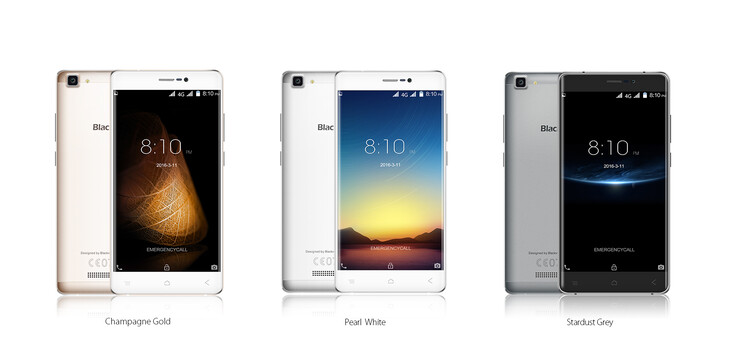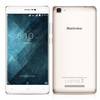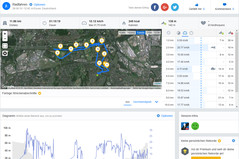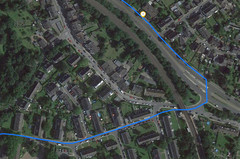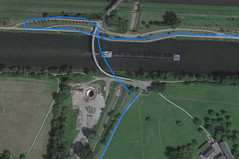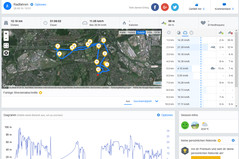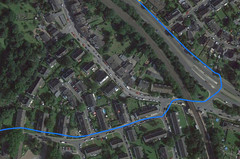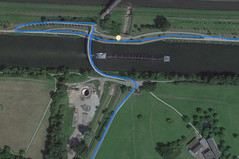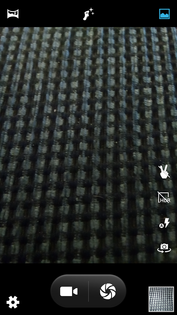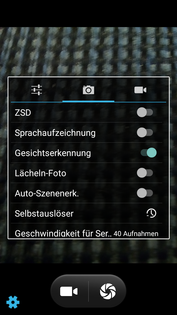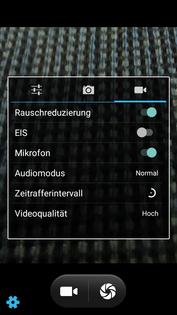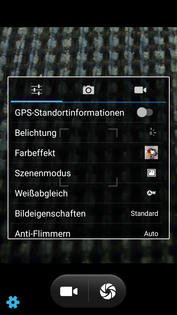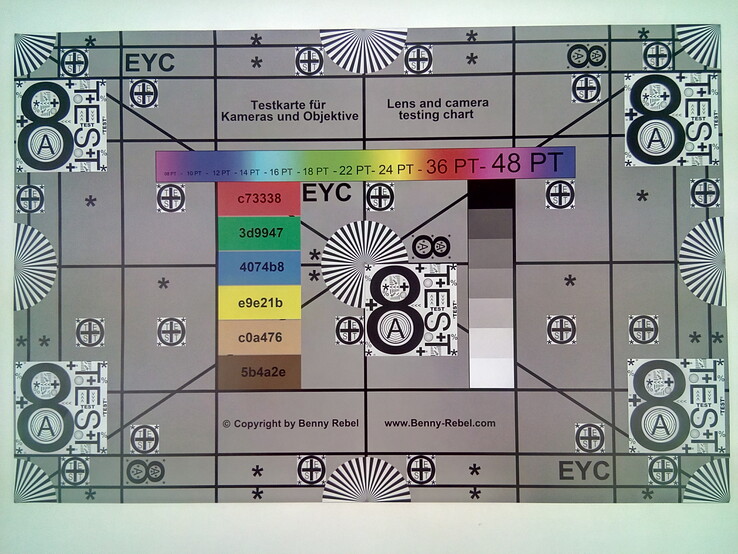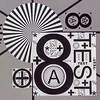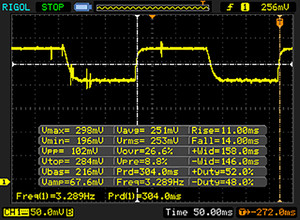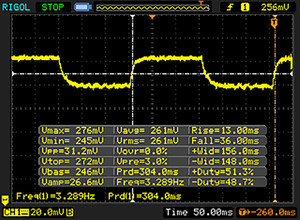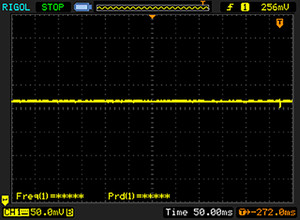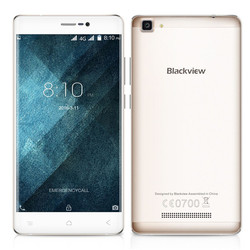Breve análisis del Smartphone Blackview A8 Max
Top 10 Análisis
» Top 10 Portátiles Multimedia
» Top 10 Portátiles de Juego
» Top 10 Portátiles de Juego ligeros
» Top 10 Portátiles Asequibles de Oficina/Empresa
» Top 10 Portátiles de Juego Ligeros
» Top 10 Portátiles de Oficina/Empresa Premium
» Top 10 Estaciones de Trabajo
» Top 10 Subportátiles
» Top 10 Ultrabooks
» Top 10 Convertibles
» Top 10 Tablets
» Top 10 Tablets Windows
» Top 10 Tablets de menos de 250 Euros
» Top 10 Phablets (>5.5")
» Top 10 Smartphones
» Top 10 Smartphones (≤5")
» Top 10 Smartphones de menos de 300 Euros
» Top 10 Smartphones de menos de 120 Euros
» Top 10 Portátiles de menos de 1000 Euros
» Top 10 Portátiles de menos de 500 Euros
» Top 10 Portátiles de menos de 300 Euros
» Los Mejores Displays de Portátiles Analizados por Notebookcheck
| Networking | |
| iperf3 transmit AX12 | |
| Blackview A8 Max | |
| iperf3 receive AX12 | |
| Blackview A8 Max | |
| iperf Server (receive) TCP 1 m | |
| Xiaomi Mi 5 | |
| Blackview R7 | |
| Ulefone Metal | |
| Archos 50 Platinum 4G | |
| Oukitel U7 Plus | |
| Leagoo M5 | |
| TP-Link Neffos C5 | |
| iperf Client (transmit) TCP 1 m | |
| Xiaomi Mi 5 | |
| Blackview R7 | |
| Ulefone Metal | |
| Oukitel U7 Plus | |
| Leagoo M5 | |
| TP-Link Neffos C5 | |
| Archos 50 Platinum 4G | |
| |||||||||||||||||||||||||
iluminación: 86 %
Brillo con batería: 435 cd/m²
Contraste: 403:1 (Negro: 1.08 cd/m²)
ΔE ColorChecker Calman: 5.7 | ∀{0.5-29.43 Ø4.77}
ΔE Greyscale Calman: 5.9 | ∀{0.09-98 Ø5}
Gamma: 2.18
CCT: 8164 K
| Blackview A8 Max IPS, 1280x720, 5.5" | Ulefone Metal IPS, 1280x720, 5" | Oukitel U7 Plus IPS, 1280x720, 5.5" | Leagoo M5 IPS, 1280x720, 5" | Archos 50 Platinum 4G IPS, 1280x720, 5" | TP-Link Neffos C5 IPS, 1280x720, 5" | Blackview R7 IPS, 1920x1080, 5.5" | Xiaomi Mi 5 IPS, 1920x1080, 5.2" | |
|---|---|---|---|---|---|---|---|---|
| Screen | -2% | 10% | -18% | 7% | 20% | -11% | 57% | |
| Brightness middle (cd/m²) | 435 | 312 -28% | 462 6% | 401 -8% | 344 -21% | 508 17% | 552 27% | 598 37% |
| Brightness (cd/m²) | 407 | 315 -23% | 437 7% | 387 -5% | 349 -14% | 491 21% | 526 29% | 566 39% |
| Brightness Distribution (%) | 86 | 87 1% | 91 6% | 92 7% | 89 3% | 89 3% | 91 6% | 90 5% |
| Black Level * (cd/m²) | 1.08 | 0.56 48% | 0.58 46% | 0.53 51% | 0.65 40% | 0.58 46% | 0.64 41% | 0.51 53% |
| Contrast (:1) | 403 | 557 38% | 797 98% | 757 88% | 529 31% | 876 117% | 863 114% | 1173 191% |
| Colorchecker dE 2000 * | 5.7 | 6.8 -19% | 7.5 -32% | 9.7 -70% | 5.8 -2% | 7 -23% | 11 -93% | 3.5 39% |
| Colorchecker dE 2000 max. * | 12.3 | 14 -14% | 12.8 -4% | 22.3 -81% | 10.7 13% | 14.1 -15% | 20.8 -69% | 6.1 50% |
| Greyscale dE 2000 * | 5.9 | 7.1 -20% | 8.5 -44% | 13.3 -125% | 5.7 3% | 6.1 -3% | 14.3 -142% | 3.5 41% |
| Gamma | 2.18 101% | 2.77 79% | 2.54 87% | 2.3 96% | 2.1 105% | 2.15 102% | 2.21 100% | 2.29 96% |
| CCT | 8164 80% | 7402 88% | 8914 73% | 10359 63% | 7792 83% | 8068 81% | 12996 50% | 6532 100% |
* ... más pequeño es mejor
Tiempos de respuesta del display
| ↔ Tiempo de respuesta de Negro a Blanco | ||
|---|---|---|
| 25 ms ... subida ↗ y bajada ↘ combinada | ↗ 11 ms subida | |
| ↘ 14 ms bajada | ||
| La pantalla mostró tiempos de respuesta relativamente lentos en nuestros tests pero podría ser demasiado lenta para los jugones. En comparación, todos los dispositivos de prueba van de ##min### (mínimo) a 240 (máximo) ms. » 58 % de todos los dispositivos son mejores. Eso quiere decir que el tiempo de respuesta es peor que la media (20.2 ms) de todos los dispositivos testados. | ||
| ↔ Tiempo de respuesta 50% Gris a 80% Gris | ||
| 49 ms ... subida ↗ y bajada ↘ combinada | ↗ 13 ms subida | |
| ↘ 36 ms bajada | ||
| La pantalla mostró tiempos de respuesta lentos en nuestros tests y podría ser demasiado lenta para los jugones. En comparación, todos los dispositivos de prueba van de ##min### (mínimo) a 636 (máximo) ms. » 84 % de todos los dispositivos son mejores. Eso quiere decir que el tiempo de respuesta es peor que la media (31.6 ms) de todos los dispositivos testados. | ||
Parpadeo de Pantalla / PWM (Pulse-Width Modulation)
| Parpadeo de Pantalla / PWM no detectado | |||
Comparación: 53 % de todos los dispositivos testados no usaron PWM para atenuar el display. Si se usó, medimos una media de 8088 (mínimo: 5 - máxmo: 343500) Hz. | |||
| AndroBench 3-5 | |
| Sequential Write 256KB SDCard (ordenar por valor) | |
| Blackview A8 Max | |
| Ulefone Metal | |
| Oukitel U7 Plus | |
| Leagoo M5 | |
| Archos 50 Platinum 4G | |
| TP-Link Neffos C5 | |
| Blackview R7 | |
| Sequential Read 256KB SDCard (ordenar por valor) | |
| Blackview A8 Max | |
| Ulefone Metal | |
| Oukitel U7 Plus | |
| Leagoo M5 | |
| Archos 50 Platinum 4G | |
| TP-Link Neffos C5 | |
| Blackview R7 | |
| Random Write 4KB (ordenar por valor) | |
| Blackview A8 Max | |
| Ulefone Metal | |
| Oukitel U7 Plus | |
| Leagoo M5 | |
| Archos 50 Platinum 4G | |
| TP-Link Neffos C5 | |
| Blackview R7 | |
| Xiaomi Mi 5 | |
| Random Read 4KB (ordenar por valor) | |
| Blackview A8 Max | |
| Ulefone Metal | |
| Oukitel U7 Plus | |
| Leagoo M5 | |
| Archos 50 Platinum 4G | |
| TP-Link Neffos C5 | |
| Blackview R7 | |
| Xiaomi Mi 5 | |
| Sequential Write 256KB (ordenar por valor) | |
| Blackview A8 Max | |
| Ulefone Metal | |
| Oukitel U7 Plus | |
| Leagoo M5 | |
| Archos 50 Platinum 4G | |
| TP-Link Neffos C5 | |
| Blackview R7 | |
| Xiaomi Mi 5 | |
| Sequential Read 256KB (ordenar por valor) | |
| Blackview A8 Max | |
| Ulefone Metal | |
| Oukitel U7 Plus | |
| Leagoo M5 | |
| Archos 50 Platinum 4G | |
| TP-Link Neffos C5 | |
| Blackview R7 | |
| Xiaomi Mi 5 | |
| AnTuTu v6 - Total Score (ordenar por valor) | |
| Blackview A8 Max | |
| Ulefone Metal | |
| Oukitel U7 Plus | |
| Leagoo M5 | |
| Archos 50 Platinum 4G | |
| TP-Link Neffos C5 | |
| Blackview R7 | |
| Xiaomi Mi 5 | |
| 3DMark | |
| 1280x720 offscreen Ice Storm Unlimited Score (ordenar por valor) | |
| Blackview A8 Max | |
| Ulefone Metal | |
| Oukitel U7 Plus | |
| Leagoo M5 | |
| Archos 50 Platinum 4G | |
| TP-Link Neffos C5 | |
| Blackview R7 | |
| Xiaomi Mi 5 | |
| 1280x720 offscreen Ice Storm Unlimited Graphics Score (ordenar por valor) | |
| Blackview A8 Max | |
| Ulefone Metal | |
| Oukitel U7 Plus | |
| Leagoo M5 | |
| Archos 50 Platinum 4G | |
| TP-Link Neffos C5 | |
| Blackview R7 | |
| Xiaomi Mi 5 | |
| 1280x720 offscreen Ice Storm Unlimited Physics (ordenar por valor) | |
| Blackview A8 Max | |
| Ulefone Metal | |
| Oukitel U7 Plus | |
| Leagoo M5 | |
| Archos 50 Platinum 4G | |
| TP-Link Neffos C5 | |
| Blackview R7 | |
| Xiaomi Mi 5 | |
| 2560x1440 Sling Shot OpenGL ES 3.0 (ordenar por valor) | |
| Blackview A8 Max | |
| Ulefone Metal | |
| Oukitel U7 Plus | |
| TP-Link Neffos C5 | |
| Blackview R7 | |
| Xiaomi Mi 5 | |
| 2560x1440 Sling Shot OpenGL ES 3.0 Graphics (ordenar por valor) | |
| Blackview A8 Max | |
| Ulefone Metal | |
| Oukitel U7 Plus | |
| TP-Link Neffos C5 | |
| Blackview R7 | |
| Xiaomi Mi 5 | |
| 2560x1440 Sling Shot OpenGL ES 3.0 Physics (ordenar por valor) | |
| Blackview A8 Max | |
| Ulefone Metal | |
| Oukitel U7 Plus | |
| TP-Link Neffos C5 | |
| Blackview R7 | |
| Xiaomi Mi 5 | |
| GFXBench (DX / GLBenchmark) 2.7 | |
| T-Rex Onscreen (ordenar por valor) | |
| Blackview A8 Max | |
| Ulefone Metal | |
| Oukitel U7 Plus | |
| Leagoo M5 | |
| Archos 50 Platinum 4G | |
| TP-Link Neffos C5 | |
| Blackview R7 | |
| Xiaomi Mi 5 | |
| 1920x1080 T-Rex Offscreen (ordenar por valor) | |
| Blackview A8 Max | |
| Ulefone Metal | |
| Oukitel U7 Plus | |
| Leagoo M5 | |
| Archos 50 Platinum 4G | |
| TP-Link Neffos C5 | |
| Blackview R7 | |
| Xiaomi Mi 5 | |
| GFXBench 3.0 | |
| on screen Manhattan Onscreen OGL (ordenar por valor) | |
| Blackview A8 Max | |
| Ulefone Metal | |
| Oukitel U7 Plus | |
| Archos 50 Platinum 4G | |
| TP-Link Neffos C5 | |
| Blackview R7 | |
| Xiaomi Mi 5 | |
| 1920x1080 1080p Manhattan Offscreen (ordenar por valor) | |
| Blackview A8 Max | |
| Ulefone Metal | |
| Oukitel U7 Plus | |
| Archos 50 Platinum 4G | |
| TP-Link Neffos C5 | |
| Blackview R7 | |
| Xiaomi Mi 5 | |
| GFXBench 3.1 | |
| on screen Manhattan ES 3.1 Onscreen (ordenar por valor) | |
| Blackview A8 Max | |
| Ulefone Metal | |
| Oukitel U7 Plus | |
| Archos 50 Platinum 4G | |
| Blackview R7 | |
| Xiaomi Mi 5 | |
| 1920x1080 Manhattan ES 3.1 Offscreen (ordenar por valor) | |
| Blackview A8 Max | |
| Ulefone Metal | |
| Oukitel U7 Plus | |
| Archos 50 Platinum 4G | |
| Blackview R7 | |
| Xiaomi Mi 5 | |
| PCMark for Android - Work performance score (ordenar por valor) | |
| Blackview A8 Max | |
| Ulefone Metal | |
| Oukitel U7 Plus | |
| Leagoo M5 | |
| Archos 50 Platinum 4G | |
| TP-Link Neffos C5 | |
| Blackview R7 | |
| Xiaomi Mi 5 | |
| Geekbench 4.0 | |
| 64 Bit Multi-Core Score (ordenar por valor) | |
| Blackview A8 Max | |
| Ulefone Metal | |
| Oukitel U7 Plus | |
| Leagoo M5 | |
| Archos 50 Platinum 4G | |
| Blackview R7 | |
| 64 Bit Single-Core Score (ordenar por valor) | |
| Blackview A8 Max | |
| Ulefone Metal | |
| Oukitel U7 Plus | |
| Leagoo M5 | |
| Archos 50 Platinum 4G | |
| Blackview R7 | |
| BaseMark OS II | |
| Overall (ordenar por valor) | |
| Blackview A8 Max | |
| Ulefone Metal | |
| Oukitel U7 Plus | |
| Leagoo M5 | |
| Archos 50 Platinum 4G | |
| TP-Link Neffos C5 | |
| Blackview R7 | |
| Xiaomi Mi 5 | |
| System (ordenar por valor) | |
| Blackview A8 Max | |
| Ulefone Metal | |
| Oukitel U7 Plus | |
| Leagoo M5 | |
| Archos 50 Platinum 4G | |
| TP-Link Neffos C5 | |
| Blackview R7 | |
| Xiaomi Mi 5 | |
| Memory (ordenar por valor) | |
| Blackview A8 Max | |
| Ulefone Metal | |
| Oukitel U7 Plus | |
| Leagoo M5 | |
| Archos 50 Platinum 4G | |
| TP-Link Neffos C5 | |
| Blackview R7 | |
| Xiaomi Mi 5 | |
| Graphics (ordenar por valor) | |
| Blackview A8 Max | |
| Ulefone Metal | |
| Oukitel U7 Plus | |
| Leagoo M5 | |
| Archos 50 Platinum 4G | |
| TP-Link Neffos C5 | |
| Blackview R7 | |
| Xiaomi Mi 5 | |
| Web (ordenar por valor) | |
| Blackview A8 Max | |
| Ulefone Metal | |
| Oukitel U7 Plus | |
| Leagoo M5 | |
| Archos 50 Platinum 4G | |
| TP-Link Neffos C5 | |
| Blackview R7 | |
| Xiaomi Mi 5 | |
| Mozilla Kraken 1.1 - Total (ordenar por valor) | |
| Blackview A8 Max | |
| Ulefone Metal | |
| Oukitel U7 Plus | |
| Leagoo M5 | |
| Archos 50 Platinum 4G | |
| TP-Link Neffos C5 | |
| Blackview R7 | |
| Xiaomi Mi 5 | |
| Octane V2 - Total Score (ordenar por valor) | |
| Blackview A8 Max | |
| Ulefone Metal | |
| Oukitel U7 Plus | |
| Leagoo M5 | |
| Archos 50 Platinum 4G | |
| TP-Link Neffos C5 | |
| Blackview R7 | |
| Xiaomi Mi 5 | |
| JetStream 1.1 - Total Score (ordenar por valor) | |
| Blackview A8 Max | |
| Ulefone Metal | |
| Oukitel U7 Plus | |
| Leagoo M5 | |
| Archos 50 Platinum 4G | |
| TP-Link Neffos C5 | |
| Blackview R7 | |
| Xiaomi Mi 5 | |
* ... más pequeño es mejor
(±) La temperatura máxima en la parte superior es de 40.6 °C / 105 F, frente a la media de 35.2 °C / 95 F, que oscila entre 21.9 y 247 °C para la clase Smartphone.
(±) El fondo se calienta hasta un máximo de 40.8 °C / 105 F, frente a la media de 34 °C / 93 F
(±) En reposo, la temperatura media de la parte superior es de 33.7 °C / 93# F, frente a la media del dispositivo de 32.9 °C / 91 F.
Blackview A8 Max análisis de audio
(+) | los altavoces pueden reproducir a un volumen relativamente alto (#89.1 dB)
Graves 100 - 315 Hz
(-) | casi sin bajos - de media 43% inferior a la mediana
(±) | la linealidad de los graves es media (7.8% delta a frecuencia anterior)
Medios 400 - 2000 Hz
(±) | medios reducidos - de media 10.1% inferior a la mediana
(±) | la linealidad de los medios es media (9.9% delta respecto a la frecuencia anterior)
Altos 2 - 16 kHz
(+) | máximos equilibrados - a sólo 4.2% de la mediana
(+) | los máximos son lineales (3.6% delta a la frecuencia anterior)
Total 100 - 16.000 Hz
(-) | el sonido global no es lineal (30.7% de diferencia con la mediana)
En comparación con la misma clase
» 79% de todos los dispositivos probados de esta clase eran mejores, 4% similares, 17% peores
» El mejor tuvo un delta de 11%, la media fue 35%, el peor fue ###max##%
En comparación con todos los dispositivos probados
» 89% de todos los dispositivos probados eran mejores, 3% similares, 9% peores
» El mejor tuvo un delta de 4%, la media fue 24%, el peor fue ###max##%
Ulefone Metal análisis de audio
(±) | la sonoridad del altavoz es media pero buena (76.4 dB)
Graves 100 - 315 Hz
(-) | casi sin bajos - de media 25.6% inferior a la mediana
(-) | los graves no son lineales (15.5% delta a la frecuencia anterior)
Medios 400 - 2000 Hz
(+) | medios equilibrados - a sólo 3.7% de la mediana
(±) | la linealidad de los medios es media (8.2% delta respecto a la frecuencia anterior)
Altos 2 - 16 kHz
(±) | máximos más altos - de media 5.6% más altos que la mediana
(+) | los máximos son lineales (6.5% delta a la frecuencia anterior)
Total 100 - 16.000 Hz
(±) | la linealidad del sonido global es media (24.4% de diferencia con la mediana)
En comparación con la misma clase
» 58% de todos los dispositivos probados de esta clase eran mejores, 7% similares, 35% peores
» El mejor tuvo un delta de 11%, la media fue 35%, el peor fue ###max##%
En comparación con todos los dispositivos probados
» 73% de todos los dispositivos probados eran mejores, 6% similares, 21% peores
» El mejor tuvo un delta de 4%, la media fue 24%, el peor fue ###max##%
Oukitel U7 Plus análisis de audio
(±) | la sonoridad del altavoz es media pero buena (81.6 dB)
Graves 100 - 315 Hz
(-) | casi sin bajos - de media 31.6% inferior a la mediana
(±) | la linealidad de los graves es media (7.4% delta a frecuencia anterior)
Medios 400 - 2000 Hz
(±) | medios reducidos - de media 6.1% inferior a la mediana
(±) | la linealidad de los medios es media (9.1% delta respecto a la frecuencia anterior)
Altos 2 - 16 kHz
(±) | máximos más altos - de media 9.3% más altos que la mediana
(±) | la linealidad de los máximos es media (9.2% delta a frecuencia anterior)
Total 100 - 16.000 Hz
(-) | el sonido global no es lineal (34.2% de diferencia con la mediana)
En comparación con la misma clase
» 84% de todos los dispositivos probados de esta clase eran mejores, 1% similares, 14% peores
» El mejor tuvo un delta de 11%, la media fue 35%, el peor fue ###max##%
En comparación con todos los dispositivos probados
» 93% de todos los dispositivos probados eran mejores, 1% similares, 6% peores
» El mejor tuvo un delta de 4%, la media fue 24%, el peor fue ###max##%
Blackview R7 análisis de audio
(±) | la sonoridad del altavoz es media pero buena (74.4 dB)
Graves 100 - 315 Hz
(-) | casi sin bajos - de media 30.5% inferior a la mediana
(-) | los graves no son lineales (15.5% delta a la frecuencia anterior)
Medios 400 - 2000 Hz
(±) | medios reducidos - de media 9.8% inferior a la mediana
(-) | los medios no son lineales (15.2% delta respecto a la frecuencia anterior)
Altos 2 - 16 kHz
(±) | máximos más altos - de media 11.7% más altos que la mediana
(+) | los máximos son lineales (6.2% delta a la frecuencia anterior)
Total 100 - 16.000 Hz
(-) | el sonido global no es lineal (44.4% de diferencia con la mediana)
En comparación con la misma clase
» 87% de todos los dispositivos probados de esta clase eran mejores, 0% similares, 13% peores
» El mejor tuvo un delta de 11%, la media fue 35%, el peor fue ###max##%
En comparación con todos los dispositivos probados
» 95% de todos los dispositivos probados eran mejores, 0% similares, 4% peores
» El mejor tuvo un delta de 4%, la media fue 24%, el peor fue ###max##%
| Off / Standby | |
| Ocioso | |
| Carga |
|
Clave:
min: | |
| Blackview A8 Max 3000 mAh | Ulefone Metal 3050 mAh | Oukitel U7 Plus 2500 mAh | Leagoo M5 2300 mAh | Archos 50 Platinum 4G 2200 mAh | TP-Link Neffos C5 2200 mAh | Blackview R7 3000 mAh | |
|---|---|---|---|---|---|---|---|
| Power Consumption | -39% | -24% | -24% | 16% | -7% | -74% | |
| Idle Minimum * (Watt) | 0.74 | 1.41 -91% | 0.86 -16% | 0.81 -9% | 0.59 20% | 0.72 3% | 1.83 -147% |
| Idle Average * (Watt) | 1.97 | 2.46 -25% | 2.68 -36% | 2.26 -15% | 1.68 15% | 1.87 5% | 3.21 -63% |
| Idle Maximum * (Watt) | 2.09 | 2.83 -35% | 2.78 -33% | 2.39 -14% | 1.79 14% | 2 4% | 3.45 -65% |
| Load Average * (Watt) | 4.89 | 5.15 -5% | 5.33 -9% | 6.97 -43% | 4.22 14% | 5.99 -22% | 5.67 -16% |
| Load Maximum * (Watt) | 5.09 | 7.05 -39% | 6.49 -28% | 7.03 -38% | 4.26 16% | 6.45 -27% | 9.16 -80% |
* ... más pequeño es mejor
| Blackview A8 Max 3000 mAh | Ulefone Metal 3050 mAh | Oukitel U7 Plus 2500 mAh | Leagoo M5 2300 mAh | Archos 50 Platinum 4G 2200 mAh | TP-Link Neffos C5 2200 mAh | Blackview R7 3000 mAh | |
|---|---|---|---|---|---|---|---|
| Duración de Batería | |||||||
| WiFi v1.3 (h) | 8.4 | 6.7 -20% | 6.1 -27% | 6.8 -19% | 6.4 -24% | 7.6 -10% | 6.9 -18% |
Pro
Contra
El Blackview A8 Max es un smartphone básico interesante. Por sólo 90 Euros, el A8 Max tiene una carcasa - para su precio - bastante decente y un buen rendimiento de sistema. La gestión de la temperatura es eficiente y el consumo de energía mdoerado, lo que tiene un efecto positivo en el aguante.
Además, el smartphone trae un display IPS razonablemente brillante, que ofrece una buena estabilidad de ángulo de visión y colores decentes.
Al mismo tiempo, el contraste del display es malo, el almacenamiento flash interno es lento y al módulo WLAN no sólo le falta rendimiento, sino que tampoco es 100% estable.
Los smartphones básicos precisan compromisos - y el Blackview A8 Max no es diferente en ese aspecto. Visto el precio, el A8 Max no obstante es una compra decente.
Ésta es una versión acortada del análisis original. Puedes leer el análisis completo en inglés aquí.
Blackview A8 Max
- 10/19/2016 v5.1 (old)
Marcus Herbrich




